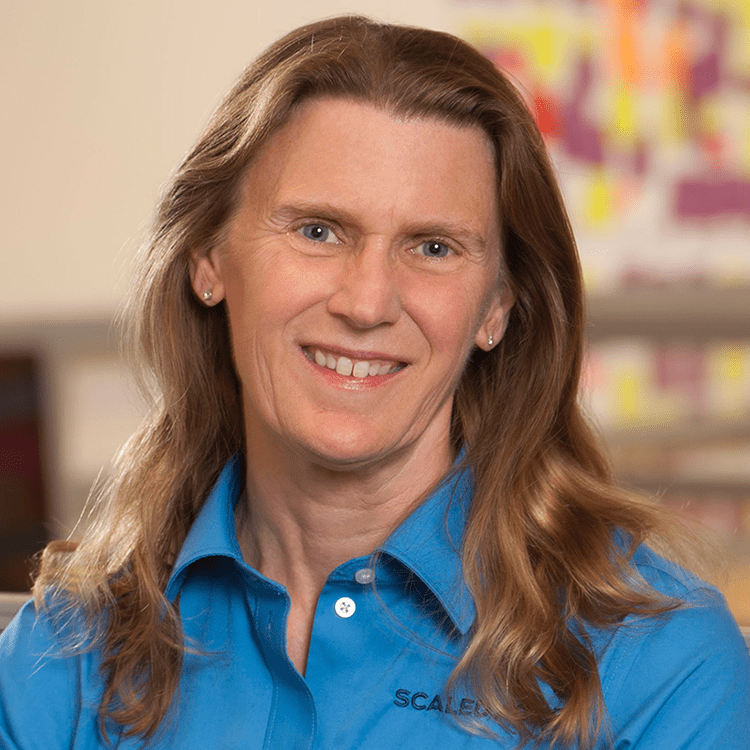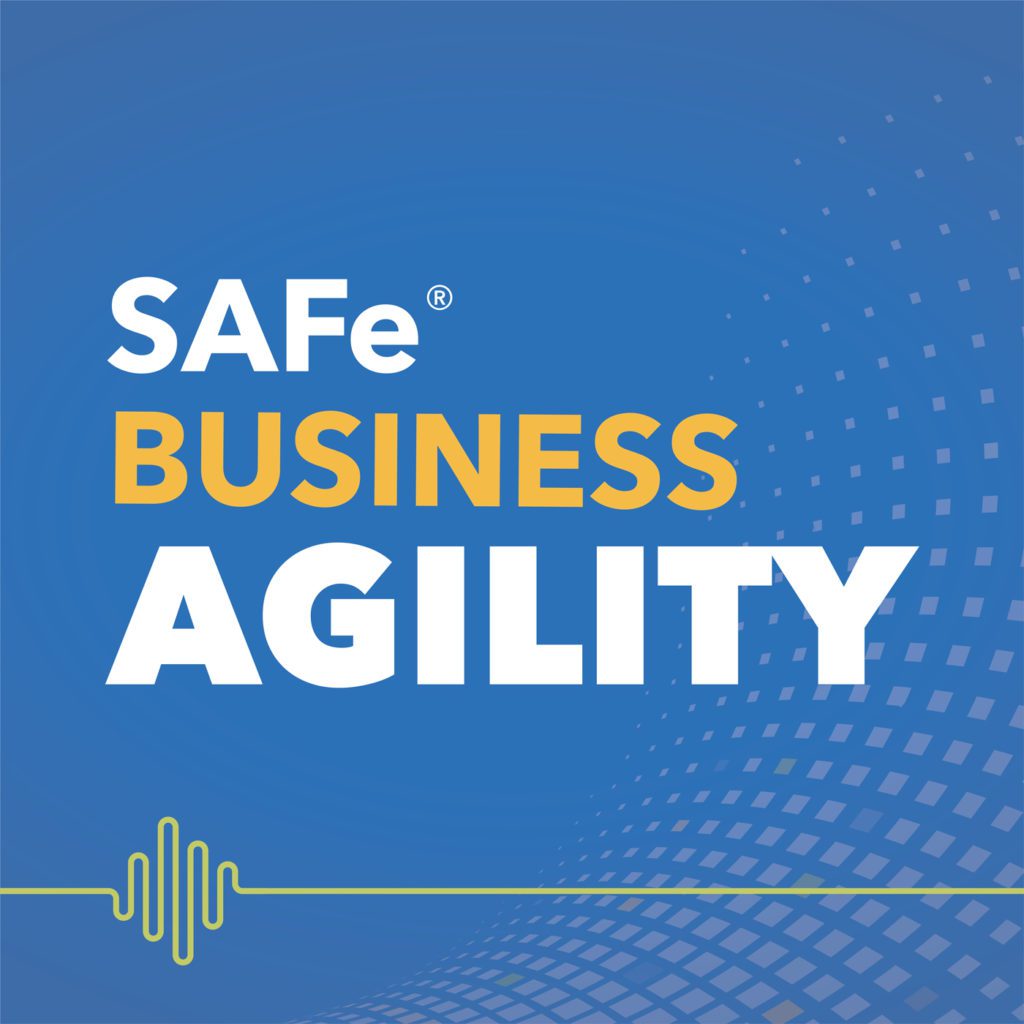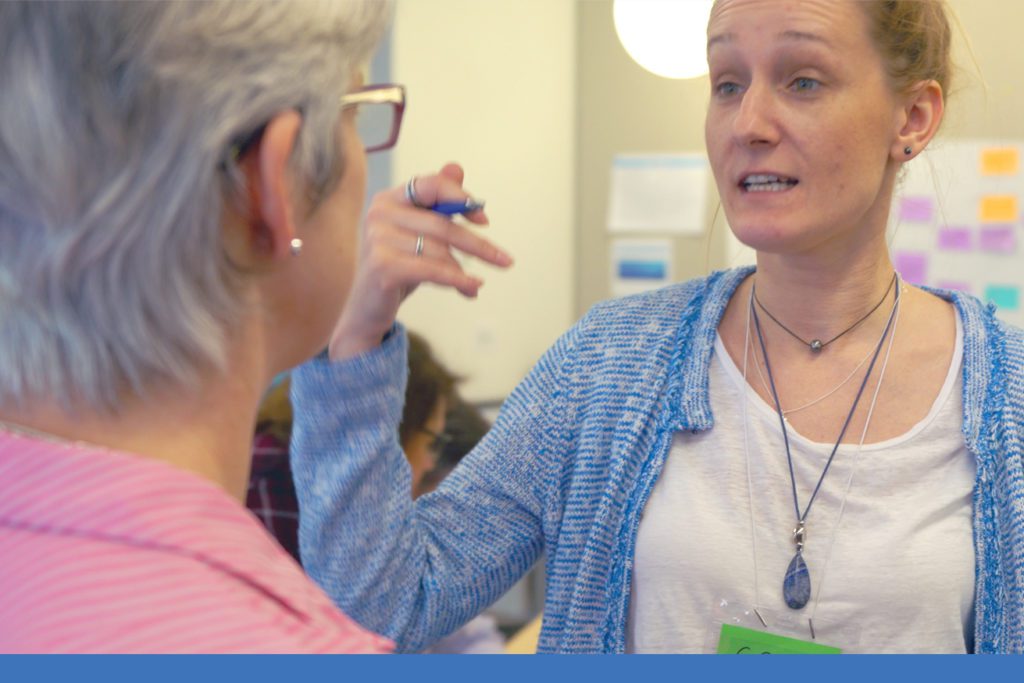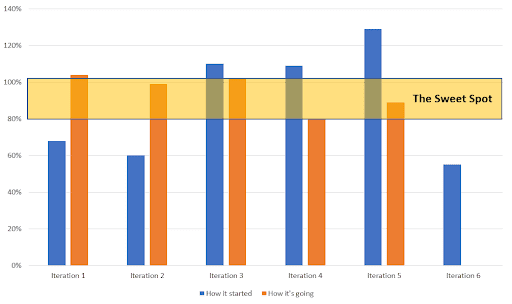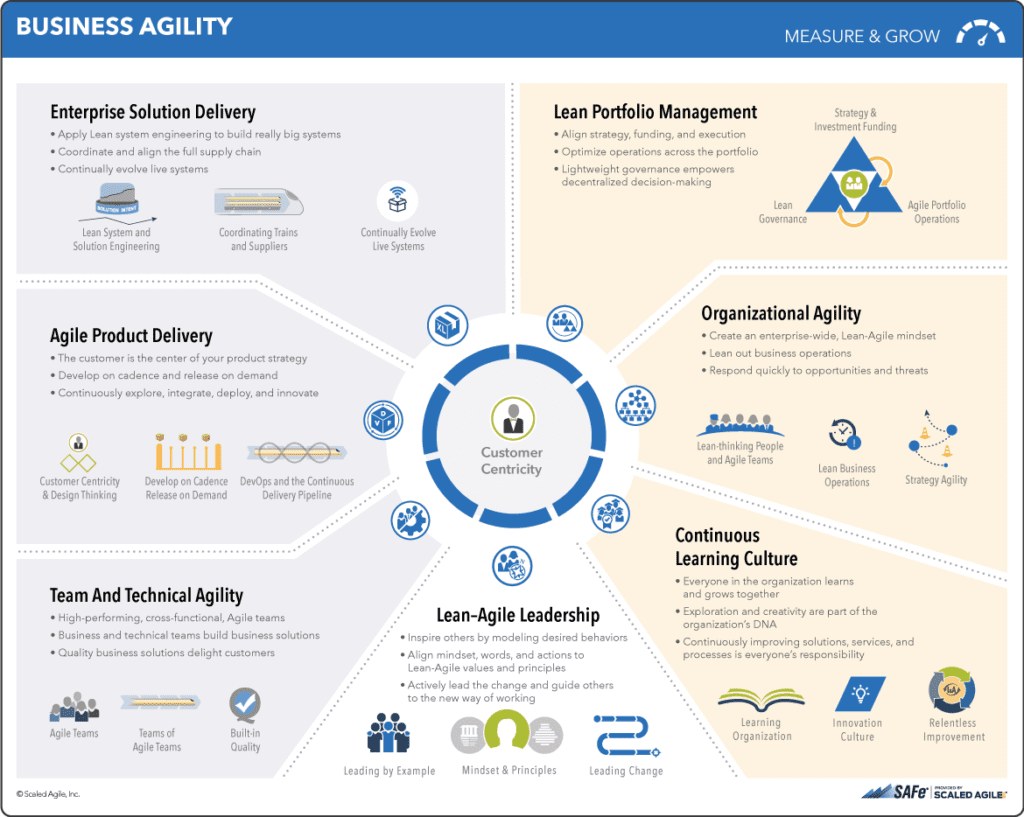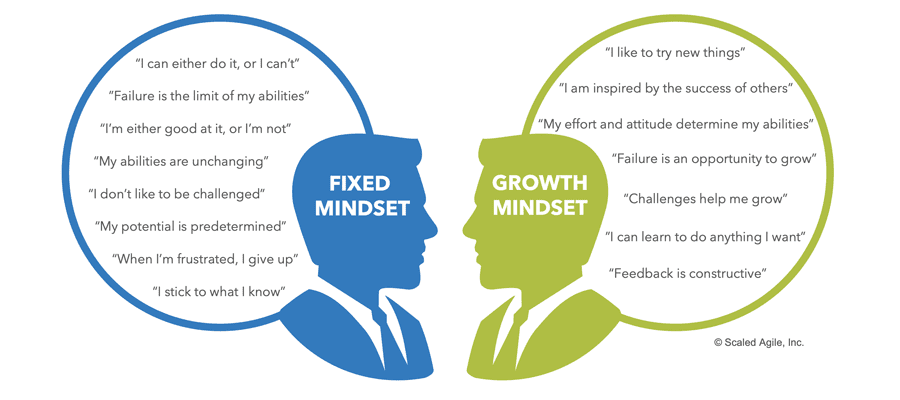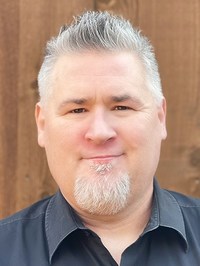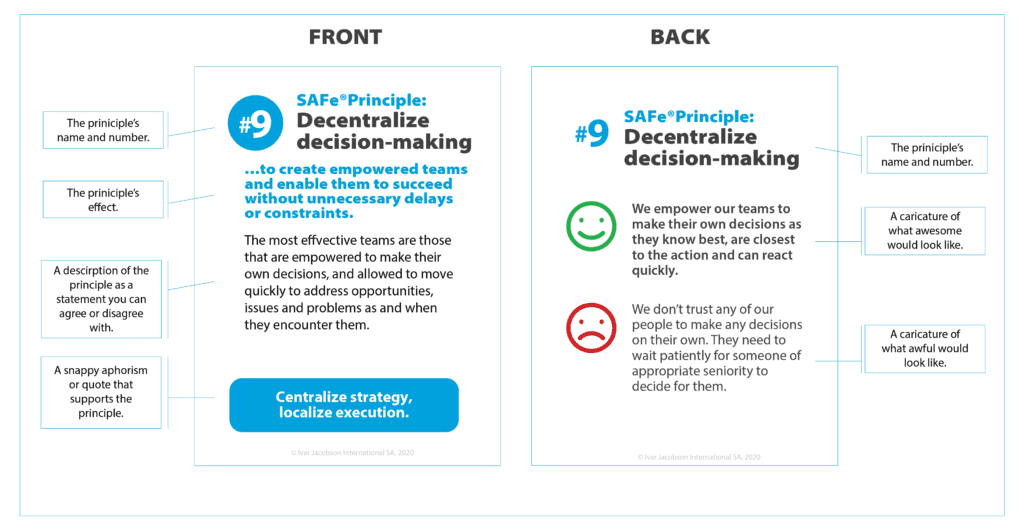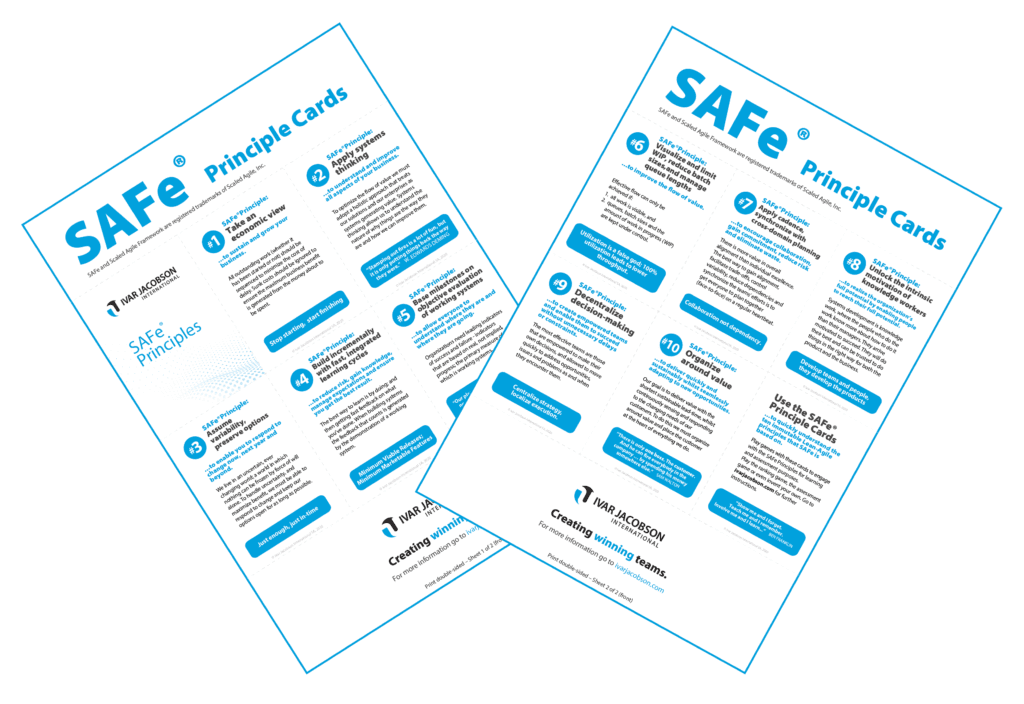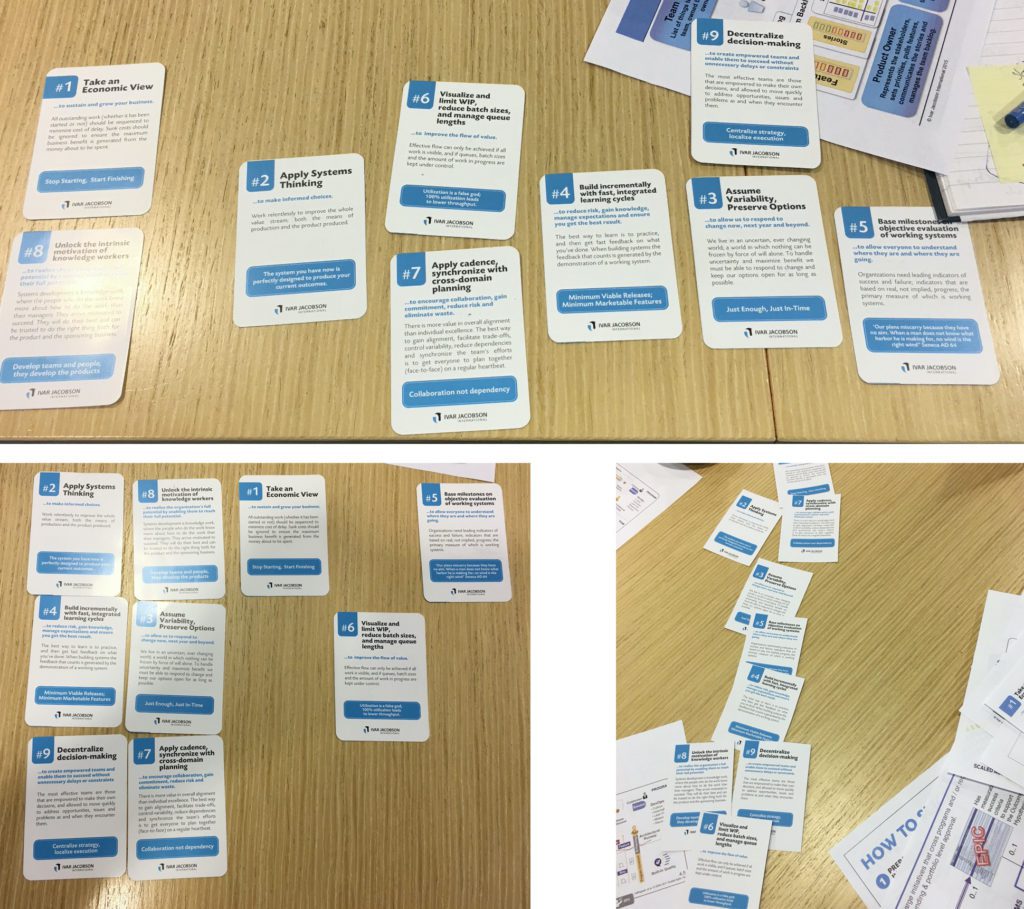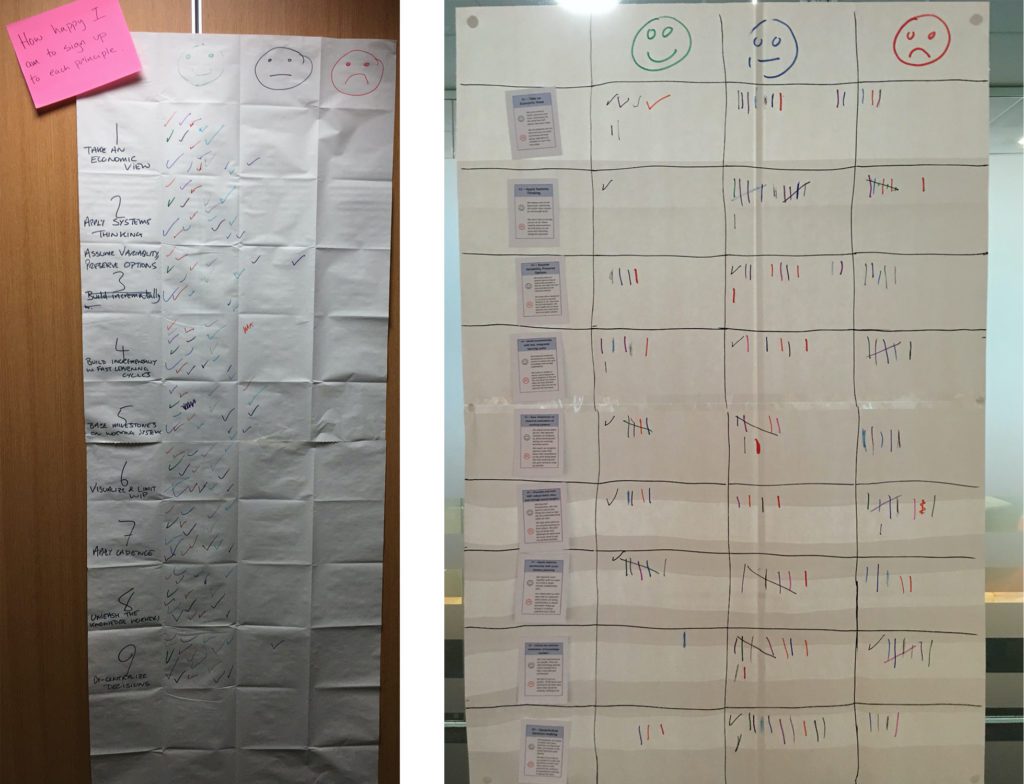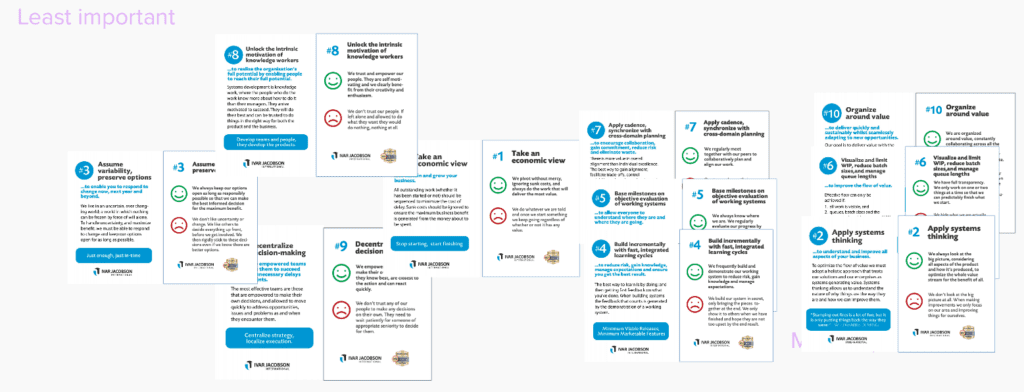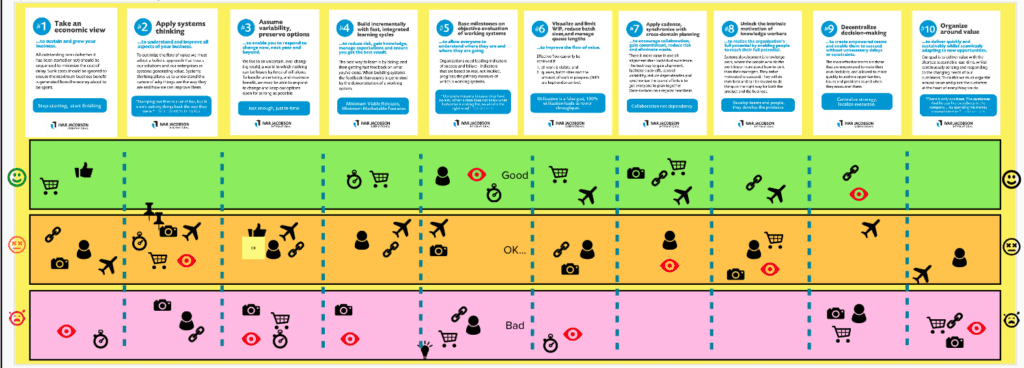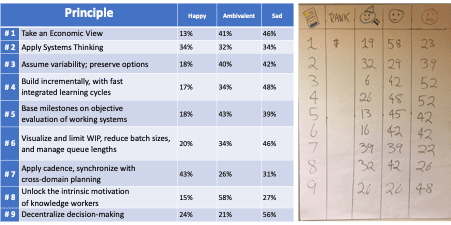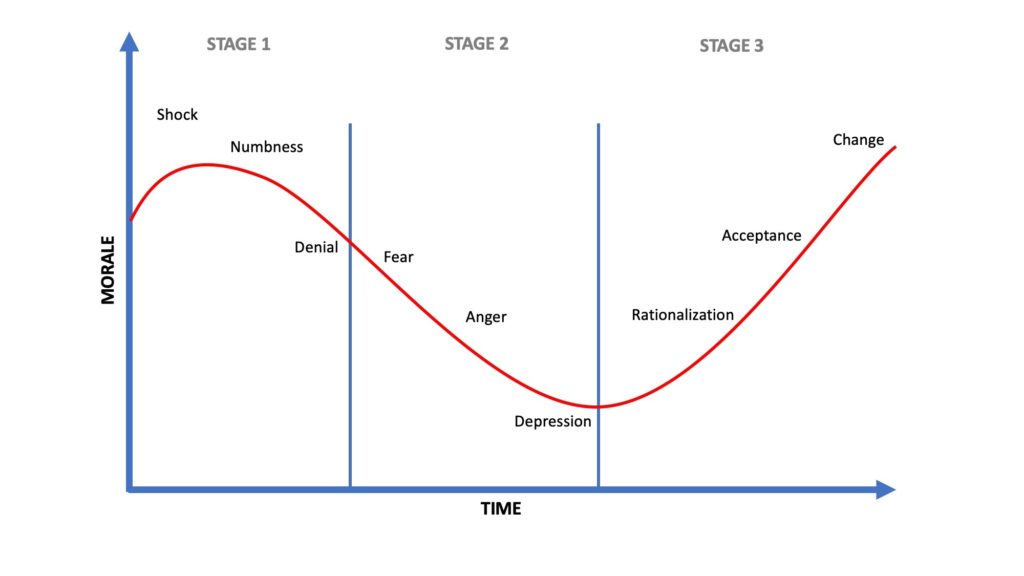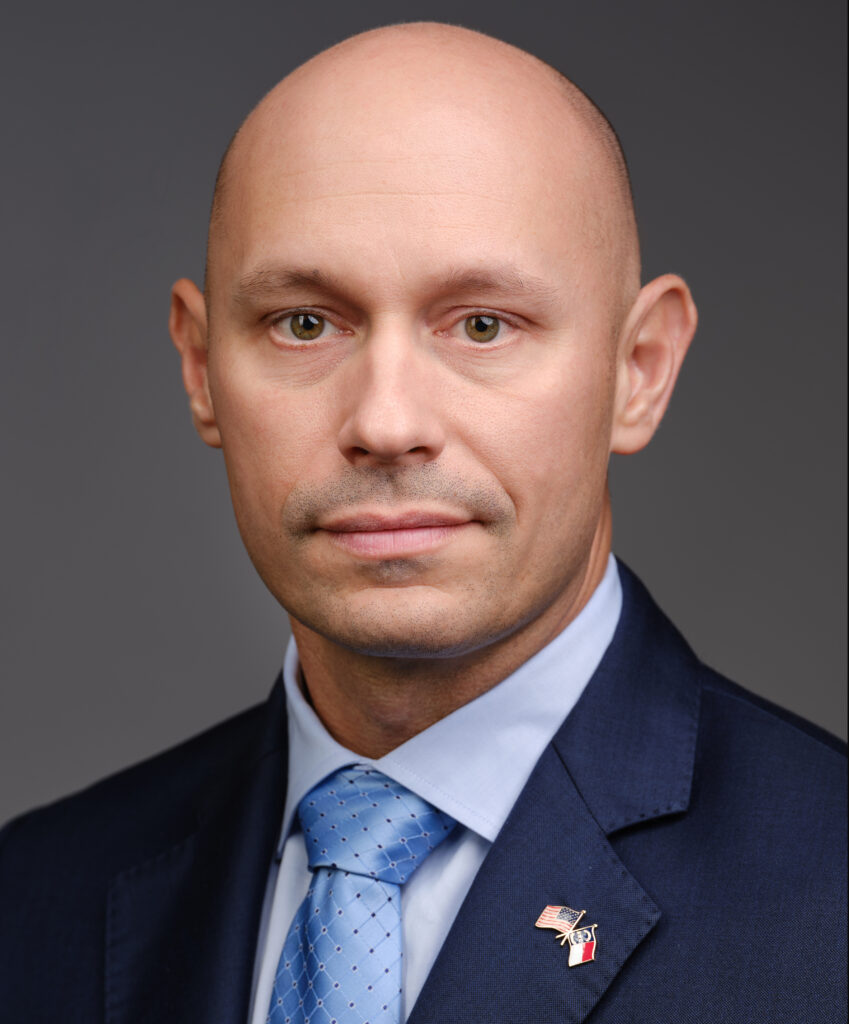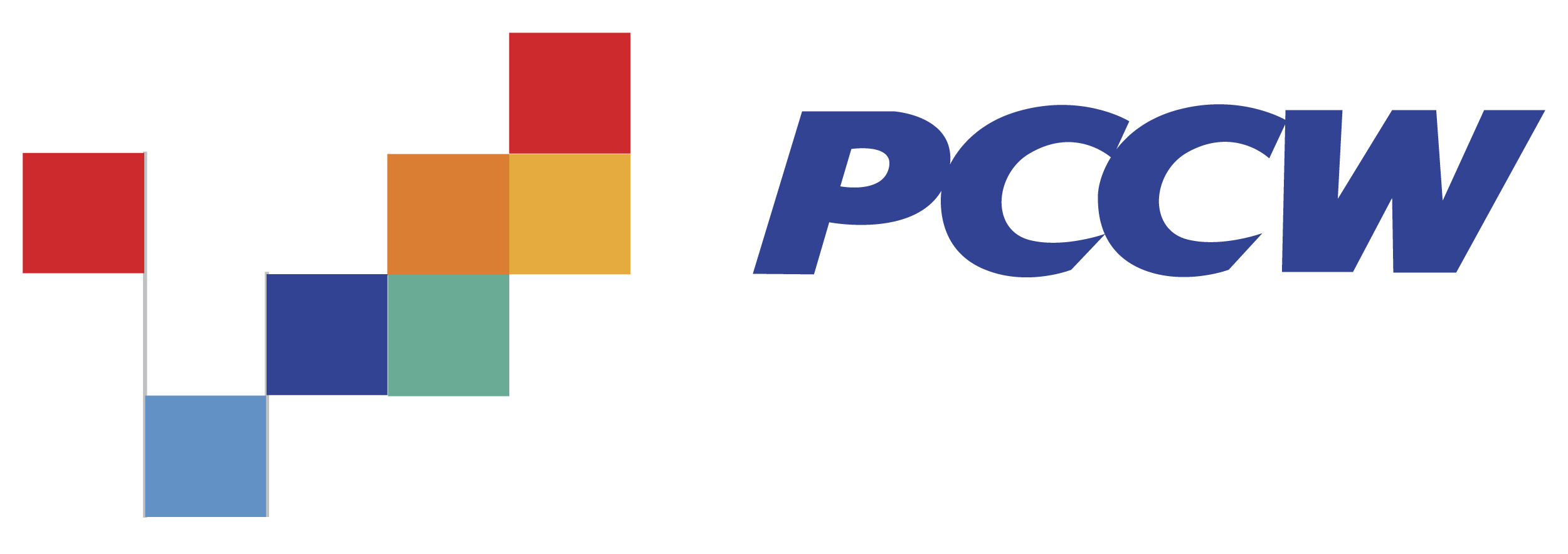
Lean-Agile practices thrive in a trust-based environment. And leaders play a huge role in creating that environment for everyone in the organization. But leadership skills and behaviors aren’t necessarily intuitive for all leaders. And leaders often don’t get the help they need to learn how to evolve and grow in their role. In this episode, Dr. Steve Mayner, SAFe Fellow and principal consultant at Scaled Agile shares insights he’s observed about leaders (and himself) while developing his Leading in the Digital Age development series.
Click the “Subscribe” button to subscribe to the SAFe Business Agility podcast on Apple Podcasts
Share:
Lean-Agile practices thrive in a trust-based environment. And leaders play a huge role in creating that environment for everyone in the organization. But leadership skills and behaviors aren’t necessarily intuitive for all leaders. And leaders often don’t get the help they need to learn how to evolve and grow in their role. In this episode, Dr. Steve Mayner, SAFe Fellow and principal consultant at Scaled Agile shares insights he’s observed about leaders (and himself) while developing his Leading in the Digital Age development series.
Melissa and Steve discuss topics including:
- Key differences between leaders and individual contributors
- How to successfully involve leaders in exploring their role
- A real-world story about an individual leader’s personal transformation
Hosted by: Melissa Reeve

Melissa Reeve is the Vice President of Marketing at Scaled Agile, Inc. In this role, Melissa guides the marketing team, helping people better understand Scaled Agile, the Scaled Agile Framework (SAFe), and its mission. Find Melissa on LinkedIn.
Guest: Dr. Steve Mayner

Steve is an expert thought leader, speaker, coach, consultant, and trainer in the principles and practices of agility at the enterprise level. He excels at creating positive relationships with C-level executives and management teams to help them translate business goals into initiatives that support ongoing investment themes. Connect with Steve on LinkedIn.
Transcript
Speaker 1
Looking for the latest news experiences and answers to questions about SAFe? You’ve come to the right place. This podcast is for you. The SAFe community of practitioners, trainers, users, and everyone who engages SAFe on a daily basis.
Melissa Reeve:
Welcome to the SAFe Business Agility Podcast recorded from our homes around the world. I’m Melissa Reeve, your host for today’s episode. Joining me today is Dr. Steve Mayner, SAFe Fellow and principal consultant at Scaled Agile. It’s a pleasure to have you on the show today, Steve.
Dr. Steve Mayner:
Thanks, Melissa, it’s great to be here.
Melissa Reeve:
In this episode, Steve will share interesting insights he’s observed about leaders while facilitating Scaled Agile’s new Leading in the Digital Age development series. Let’s get started. So Steve, as you led the creation of this development series for leaders and have been running these cohorts for a while, what have you learned about leaders that maybe shifted from your previous perception of them?
Dr. Steve Mayner:
You know, Melissa, many of us often put leaders on a pedestal, and I think we often think that they all have it figured out. And what I learned, truth be told, as leaders, we can all fall into the trap of even thinking of ourselves that way as well. But the reality is leaders are people too, every leader’s a human, and they have good and bad experiences like everyone else, and they make mistakes and they struggle. The real difference between a leader and an individual contributor is that one, a leader has accepted the responsibility for leading others. And two, the leader has the ability to use their influence and authority to create the success conditions for those in their charge. Here’s the key though, leaders must learn to lead themselves first before they can do either of those things effectively. And that means continuously growing and improving in their leadership skills and behaviors. So leaders in the SAFe ecosystem need the same kinds of learning opportunities and ongoing support as we’ve historically provided to the individual contributor roles in the Framework. Mid-level managers in particular often need help finding their place in SAFe, particularly those whose roles change when their organizations adopt SAFe as the new way of working.
Melissa Reeve:
So, you said something really interesting there, which is that people put them on a pedestal, and then they can sometimes put themselves on a pedestal. What do you think separates the folks who put themselves on a pedestal versus the ones who maybe just accept their humanity and maybe lead from a different place?
Dr. Steve Mayner:
You know, I think a lot of it is all of us who have grown and evolved into leadership positions have done so gradually over time. And, you know, as they say in media, sometimes we read our own press, right? And we believe the things that culturally we use in terms of our language about leaders. And it’s very easy to buy in, to sort of bask in your own success if you will. And the reality is unless opportunities, hopefully positive opportunities like this type of a development experience come along, or maybe a not-so-great experience where, you know, we have situations where we fail and then we have to learn that lesson the hard way. Unless either of those two things happen, it’s very easy for leaders to just buy into that myth that, you know, leaders have to have all the answers and leaders can’t be seen as vulnerable around the people that they lead. And so with this experience, we hope to have the positive alternative there. That being a development opportunity where we shine the light on that aspect and provide a lens for leaders to be self-reflective and to take more of that posture of, you know, hey, I’m a human being just like everybody else, just like the people I lead. I have a unique role and I’m going to do the best I can in that role to create the right environment for all of those contributors to be successful.
Melissa Reeve:
Yeah, and I think you’re right. And hidden behind those words is really finding your leadership voice. And maybe you start off with this persona or this perception of what it means to be a leader. And then as time goes by, as experience happens, hopefully, we as leaders can slip into a more authentic place.
Dr. Steve Mayner:
That’s certainly our goal and authenticity is definitely one of the things that we highlight in one of the modules of this series. And provide some very practical exercises and activities that give participants the opportunity to do that self-reflection and to find that authentic self, that true north, and to gain the awareness of how important behaving and leading from that authentic place is in terms of creating that trust-based environment. That’s so critical in any organization but particularly in organizations that are adopting SAFe.
Melissa Reeve:
Yeah. So, I’m realizing as we’re chatting, we’re talking about this new Leading in the Digital Age series. But for our listeners out there, they probably aren’t familiar with this. Can you give our listeners just a brief overview of this series, kind of why, what motivated you to develop it, who it’s for, how people can access it?
Dr. Steve Mayner:
Certainly, this has been a passion project for me. I have been working with leader development for many years long before coming to Scaled Agile. And it’s just for my own journey from being, you know, an entry-level technical person coming right out of college and following a normal development path and eventually getting into management and leadership, and rising through those ranks and having my own failures and successes in my private career. But also having experienced a lot of these same things in my military career. So, I kind of had both perspectives of what it meant to be in leadership roles. And the older I got and the more experienced I got moving into particularly consulting types of roles and helping organizations adopt these new ways of working, it just became very, very apparent to me that the role of leaders in creating the right culture, the right environment, is just so very critical. But so often, they don’t get the help that they need to learn how to evolve and to exhibit those most positive behaviors.
Sometimes they do, there are many leadership development programs out there, but many times they don’t. And so they do the best they can. And we’ve seen that in the field, working with organizations adopting SAFe and the implications of both great leaders who have the right mindset and behaviors, and unfortunately those that don’t. So it’s those experiences that have always motivated me to do whatever I could to help those people in those roles. And then coming in to Scaled Agile, having these conversations with Dean and Chris and our leadership team, just looking for the opportunity. And eventually, it was provided to explore and experiment. Could we at Scaled Agile as a learning company, not only provide learning assets, like our courses and our workshops and our toolkits and all the things that we provide to help the learning process for our individual contributors, which we’re well known for, but could we also step into that space of providing similar help to leaders who aren’t in the role of scrum master or RTE or something like that, but who have these leadership responsibilities in the ecosystem in which SAFe operates.
Melissa Reeve:
And so you developed the Leading in the Digital Age series. And I understand that we need to engage our leadership. And in fact, on the podcast, we talk a lot about how to engage leaders in a SAFe transformation. So in this new leader development series, how do you involve leaders successfully in exploring their roles?
Dr. Steve Mayner:
So when we have a customer express interest in running either of the first two modules in the series, which are Leading by Example and Accelerating Change Leadership, the first thing that we had to work with our customers on was to identify leaders who were open to engaging in a personal growth process through this experience, kind of the coalition of the willing, if you will. And the next thing we had to do was create a psychologically safe environment where leaders could be vulnerable with a group of their peers. And we also wanted the same participants to learn how to create that same safe environment for their employees. This is so critical to create that generative, trust-based environment where Lean-Agile practices can flourish. And the thing about it is only leaders can create that environment. We also had to commit to absolute confidentiality throughout the entire experience because the participants were going to be sharing some personal, private information, as far as they were comfortable.
So, confidentiality was absolutely, absolutely crucial. Then the next thing we had to do is in every activity, we invited leaders to bring their real work, the real challenges, the real initiatives into the learning process. So there were no abstract or mythical organizations for the activities. This allowed participants to take the results of those discussions and immediately apply their action items into their real context, which made them much more willing to engage in this learning experience. And then finally, we created the conditions where the participants left with the experience of feeling more connected and more committed to each other than ever before. I mean, we really saw true leadership teams emerge from these experiences. And it was so positive that many of them wanted to immediately create that very same experience for their teams and for their peers.
Melissa Reeve:
Yeah, I hear what you’re saying. You know, my experience with folks in leadership positions is that part of the reason they got there was this interest in furthering their knowledge, developing self-growth and learning more about themselves and how they can become a better leader. So it’s not surprising to me that you get people leaning in. You know, some of the other things that you mentioned there, which is creating a psychologically safe environment and doing that by making sure that you’ve got absolute confidentiality, is so critical. My guess is that who facilitates this also plays a really important role in the outcomes?
Dr. Steve Mayner:
It absolutely does. And we have a very different process for validating facilitators for this series. And we do for any of our other learning products for that very reason. We want to make sure every facilitator is properly equipped and are really adept in their facilitation skills before we just turn them loose with a very powerful, but, you know, and also a type of product that you want to handle very carefully because of the nature of the kinds of things that you’re going to be doing, and the kinds of conversations that are going to be had in these cohorts.
Melissa Reeve:
Yeah, so for any of our listeners out there who are eager to try out this new series, just know that it is a commitment to get up the learning curve of how to facilitate this effectively. So, Steve, that’s great when we have leaders who lean in and engage with this type of learning. What do you do with the resistors, those leaders who are like, “I’m too busy. I don’t need this.” You know, I’m happy to write the check for a SAFe implementation but you know, I feel like I’ve already got this down.”
Dr. Steve Mayner:
Oh, sure. We certainly have our share of those. And what I always encourage our facilitators to do is first start from a position of empathy. You know, the truth is most people who are resisting this opportunity or resisting change, they’re not trying to be difficult. There are real fears and concerns that lie underneath that behavior. We identify as being resistors. So we need to, first of all, acknowledge and respect those concerns. And if we can guide them to a point of being open to the experience, then we absolutely do. And if not, we don’t force it. We encourage our customers to give those leaders who may not quite be ready the time and the space and the support and then provide them other opportunities to participate in a cohort. At a later time, we also caution our Leading in the Digital Age facilitators that they can’t use these learning experiences to force behavior change on those who aren’t ready and willing to adapt.
That’s just going to create more conflict and it will actually impede the growth of the other members of the cohort if these individuals actually do participate. In fact, the best implementation model we’ve seen is what we’ve called an invitation-based approach where leaders actually have to apply to be accepted into a cohort. We’ve had several of our customers actually build an application process where leaders had to describe why they wanted to attend and how their participation would benefit the company. And this helped identify who truly had a growth mindset and was open to the personal changes that we knew would be prompted by the experience. So again, let me just encourage everyone out there listening, please, don’t give up on your resistors. They may just need a little more time and a little more one-on-one help to guide them down the path from a fixed to a growth mindset so that they can get the intended benefit from such an experience.
Melissa Reeve:
So, this sounds like pretty basic Agile, right? Wait for the pull, see where the interest is, and use that to help lead the way for the rest of the organization, including the resistors.
Dr. Steve Mayner:
Absolutely. So much of Agile is a cultural element even more so at times and even the practice elements of what we typically think of when we think of Agile.
Melissa Reeve:
So, as you’ve gone through the process of developing out this series, it sounds like a lot of learning has taken place. Can you share a story with our listeners about a leader’s transformation that you witnessed?
Dr. Steve Mayner:
There are so many stories, and I know we don’t have time to share them all, but one particular one stands out in my mind. We had one participant and this individual actually owns his own company. And he went through the enablement version of Leading by Example so that he could facilitate modules with his customers in the future. What he didn’t expect from that experience was how transformative it was going to be for him personally. And when he shared this story, after the cohort was concluded, I’ll never forget it, because he was almost in tears. As he left the experience in Leading by Example, as he described it, he had a completely different take on how he needed to show up as a leader in his own company, on the responsibility that he had to create a positive, generative, trust-based environment for everyone else.
And that his role was much more than just running meetings and making decisions and meeting numbers. And he also left with a new appreciation for how his own behaviors—like how he interacts with people, how he speaks, how he responds—directly affect his people and how well his company performs financially when he creates that positive, generative, trust-based environment. So succeeding in the digital age absolutely requires that kind of culture where people at all levels are personally invested in the organization’s success and in each other. And that’s what it means to have that generative culture, whether or not that culture exists is completely based on how leaders lead. And he was a personal testimonial to that.
Melissa Reeve:
So, it sounds like part of this experience is really being able to look in the mirror, see what’s there, see how you as a leader need to adjust, and potentially even getting feedback in a safe environment from your peers. And it feels to me like that type of feedback is just, it’s what we’re all craving.
Dr. Steve Mayner:
It absolutely is. And you know, the funny thing is even if we don’t cognitively recognize it if we don’t think about it in those terms when we actually do have the opportunity to get that kind of feedback and kind of get over that initial little fear of, you know, I’m not sure, this sounds uncomfortable. And then we get that insight that we never would’ve gotten otherwise. And we have this two-way conversation and we start to sense how much the other person is committed to us and to our success. And then we get to reciprocate and do the same thing in return. It takes our perception and our feeling about what it’s like to be a part of that organization to an entirely new level. And if we’ve never experienced that before, let me tell you it’s, it’s just amazing. And I hope everyone has that opportunity at some point in time.
Melissa Reeve:
It sounds really powerful. So, my guess is that as you’ve been going through this experience, you’ve learned a thing or two about yourself as well. Would you be willing to share some of that with the audience?
Dr. Steve Mayner:
Here’s the reality, I’m a human being just like anyone else. And even though I’ve taken a leadership role in trying to bring this product to market, everything that we describe in the courses applies to me just as much as it does to anyone else. I don’t get it perfect all the time any more than any other leader does. And in fact, I can remember this at the very same time that our team was building the session in Leading by Example, on emotional competence at work, I actually experienced what we described in the course as a hijack moment. One of those highly charged emotional situations. And of course, as the person guiding the development of that product, I would love to say that, you know, I immediately drew upon all of that great information and used it to handle that situation flawlessly. But if I did, I’d be lying <laugh>, you know, and, and right after it happened, I paused and I thought, oh my goodness. You know, I should have used the very things that we’ve been talking about to handle that situation. So, yeah, even in developing it, I think we all learned much more about ourselves than we ever anticipated. Just going through the experience of exploring these topics and assembling them together and testing them out with different cohorts. Absolutely.
Melissa Reeve:
Steve, thanks so much for sharing what you’ve learned about leaders while designing and testing the leadership series. The first two modules in the new Leading in the Digital Age series are Leading by Example and Accelerating Change Leadership. Both modules will be released in early 2022 and will be available to all of our SAFe Enterprise customers. Steve, it’s been a pleasure.
Dr. Steve Mayner:
Thanks, Melissa. It’s been a pleasure for me as well, and thanks so much for inviting me.
Melissa Reeve:
And thanks to all of our listeners for listening to our show today, you can find helpful links about topics we cover today in the show notes at scaledagile.com/podcast. Be sure to revisit past topics at scaledagile.com/podcast.
Speaker 1
Relentless improvement is in our DNA and we welcome your input on how we can improve the show. Drop us a line at podcast@scaledagile.com.
